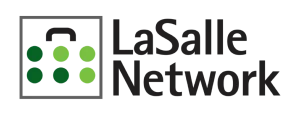We’ve all heard the saying, “work smarter, not harder,” but what does that actually mean and how do we do that? Whether you want to come up with more creative ideas, set and actually stick to deadlines, get more done in a day, the below strategies from some of the leading behavioral economists and academics can help.
Practice Deep Work. What do J.K. Rowling, Mark Twain and Carl Jung have in common? They all have mastered the art of deep work, the ability to concentrate intensely on one thing without distractions by physically removing themselves from life’s distractions to focus solely on their work.
To implement deep work, start by identifying a time in your day where you can block out all distractions – no email, no phone, nothing that could distract you from the task at hand. Author Cal Newport notes that even switching tasks for one second can result in decreased performance once you resume your work. Think about what you can do in your day to limit distractions, even if it’s just for an hour. If you want to learn more about Deep Work and how it can help your career, listen to this Hidden Brain podcast episode.
Overcome the planning fallacy. Picture this, you head into work on Monday, ready to take on a new week and crush your to-do list. By Wednesday, your deadlines, which at first seemed realistic, are falling behind and you don’t know how you’re going to hit them. You can blame the planning fallacy; the tendency to underestimate the time it will take to complete a project while knowing that similar projects have taken longer in the past. We all want to be optimistic in our abilities, but what ends up happening is we set ourselves up to fail by not being strategic in our deadlines.
For your next project, try using a tactic called the “reference-class forecast” to set more realistic deadlines. Instead of looking at the specific project you’re planning for and trying to think about the details involved with it, look back at past, similar projects and evaluate how successful the deadlines were and how long it took. According to Professor Yael Grushka-Cockayne, the point is to use historical data and experience to plan for a current project.
Try out slow motion multitasking. According to economist and journalist Tim Harford, the secret behind some of the most creative people might be their ability and desire to juggle multiple projects at once, going from one to the other when an idea strikes without feeling hurried. To be able to slow motion multitask, Harford argues we need to cross-train our minds by learning something new or try out a new hobby that has nothing to do with your day-to-day responsibilities.
One study that looked at medical students’ performance had a group of students take an art criticism course at a local museum and compared their performance with the control group, who didn’t take the course. Results found that the medical students who took the art course ended up being better at diagnosing eye diseases than the control group. They exposed themselves to something completely outside their career and it ended up making them better doctors.
Take that course you’ve been wanting to try, spend a day reading a book on a topic you know nothing about, or take up a new hobby. Creativity can come from anywhere and can help you work smarter in the year ahead.
Is finding a new job on your list of things to do? Check out our open positions here.





